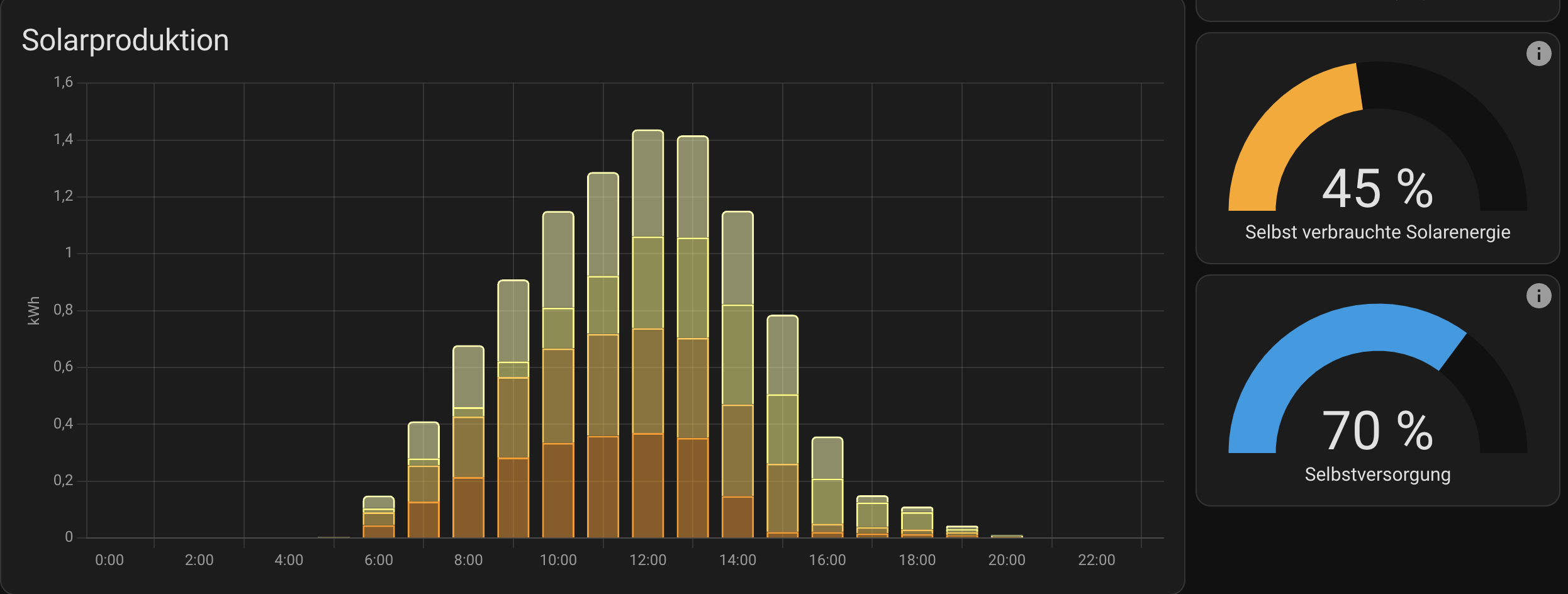Goals Link to heading
The installation of a PV system to cover the energy needs for hot water preparation. Island operation is not intended.
Initial Situation: Link to heading
Boiler for hot water preparation: warmwasser-waermepumpe-wpa-450
Nominal power consumption ~1KW (heat pump)
Grid access 4KW
Implementation Link to heading
PV Planning: Link to heading
- Integration into homeassistant
- 3.5KWp generator capacity
- Existing open source project to read data from the inverter and integrate it into homeassistant
- Integration of meter data into homeassistant
- Microinverter to keep DC voltages in strings low
Components: Link to heading
- homeassistant in Docker on existing Linux Nextcloud server
- MQTT server in homeassistant
- Data on NFS storages
- Hoymiles Inverter HMS-1600 2x
- OpenDTU DIAMEX DX-DTU-MAX, Gateway for Hoymiles 1x
- Mitterbauer AMIS reader 1x
- JA Solar Solar Module 435W Glass-Glass Full Black Bifacial 8x
Registration with NetzOOE: Link to heading
Since this system exceeds the generator capacity of 800W and is therefore not a balcony power plant, I registered the system with NetzOOE. This can be registered by an electrical engineering specialist who is a market partner with NetzOOE. If grid access is not exceeded, this is a relatively uncomplicated matter.
Reading Meter Data Link to heading
The ability to read the data must be activated by the grid operator. This can be done very easily via the NetzOOE portal.
Setup: Link to heading
- 3 panels facing south, tilted at 15 degrees, with Hoymiles HMS-1600 on phase 1
- 3 panels facing west, tilted at 15 degrees, with Hoymiles HMS-1600 on phase 2
- Installed on the carport for easy work with the test system
- OpenDTU connected to the inverters reads the values and sends them via WLAN to the MQTT of homeassistant
- Connect AMIS reader to WLAN and also send values via MQTT
- Read MQTT in homeassistant
- Time control of hot water preparation
Initial Data Link to heading


Planning Further Expansion Link to heading
- 4 panels north on the roof 40% on phase 1
- 4 panels south on the roof 40% on phase 2
- Use a switch contact to charge the boiler with solar energy
- Test the setup in the winter months
Since we heat with a tiled stove and stove in the winter months, most of the electrical energy consumption in winter is for hot water preparation.